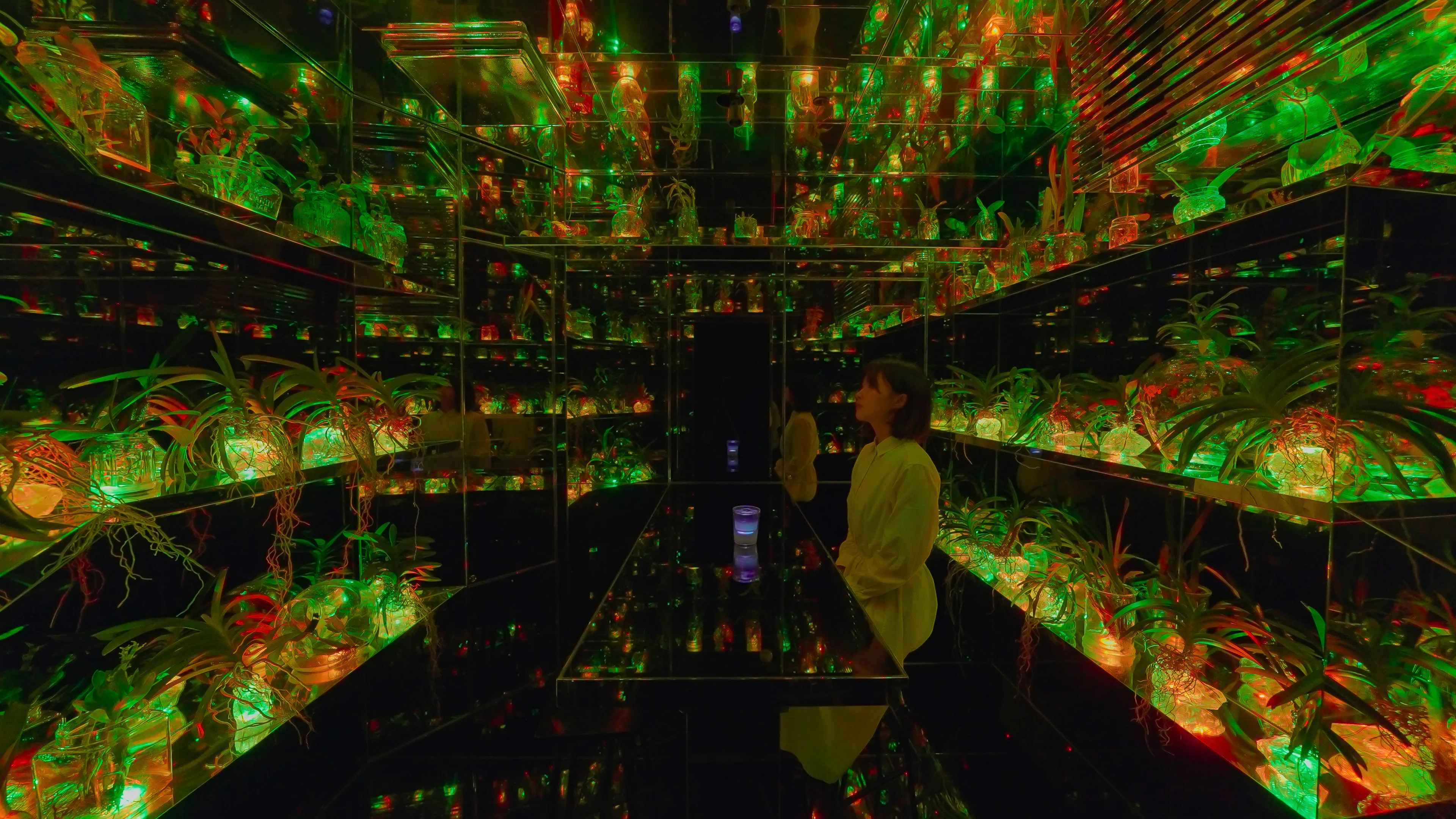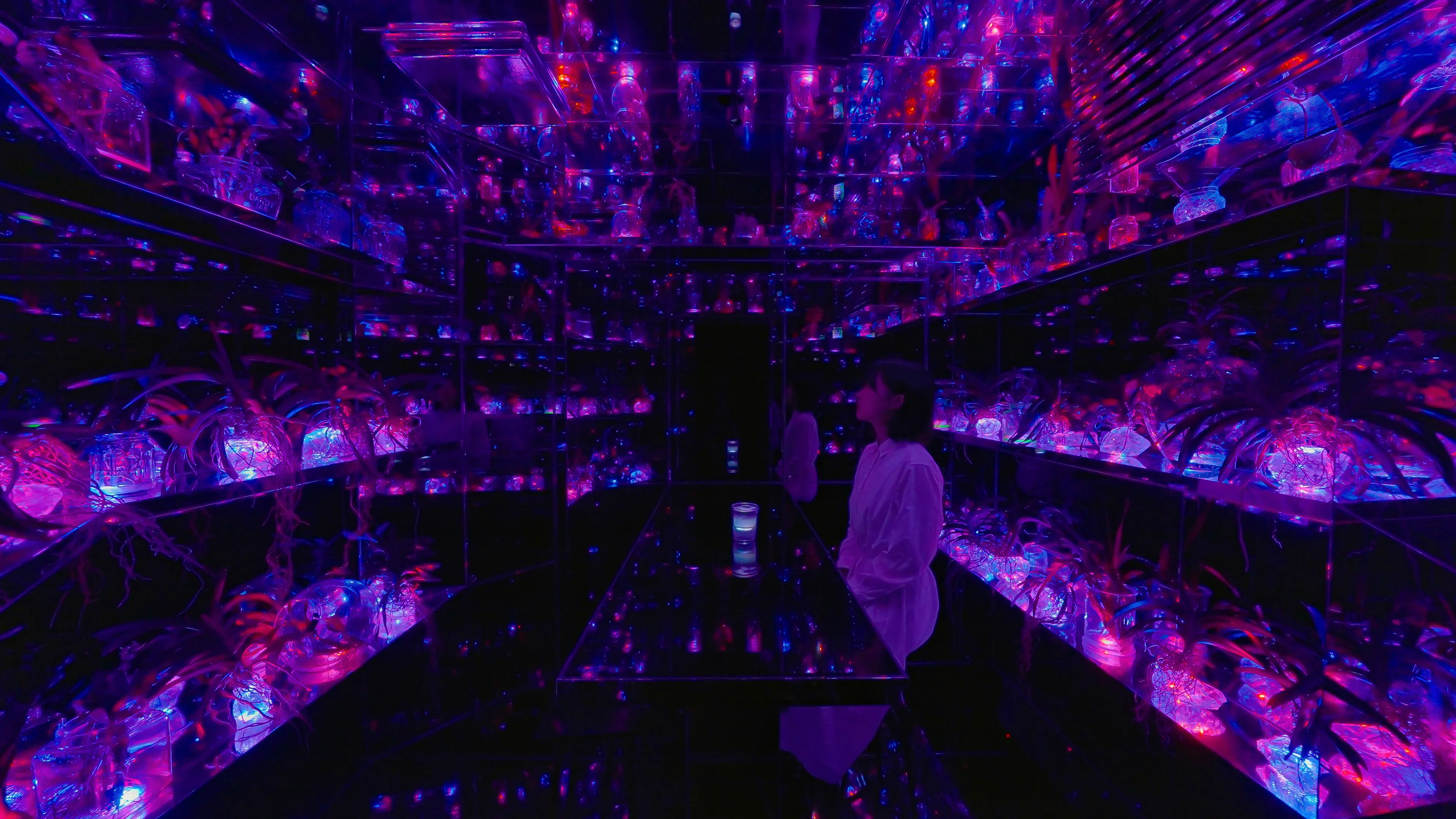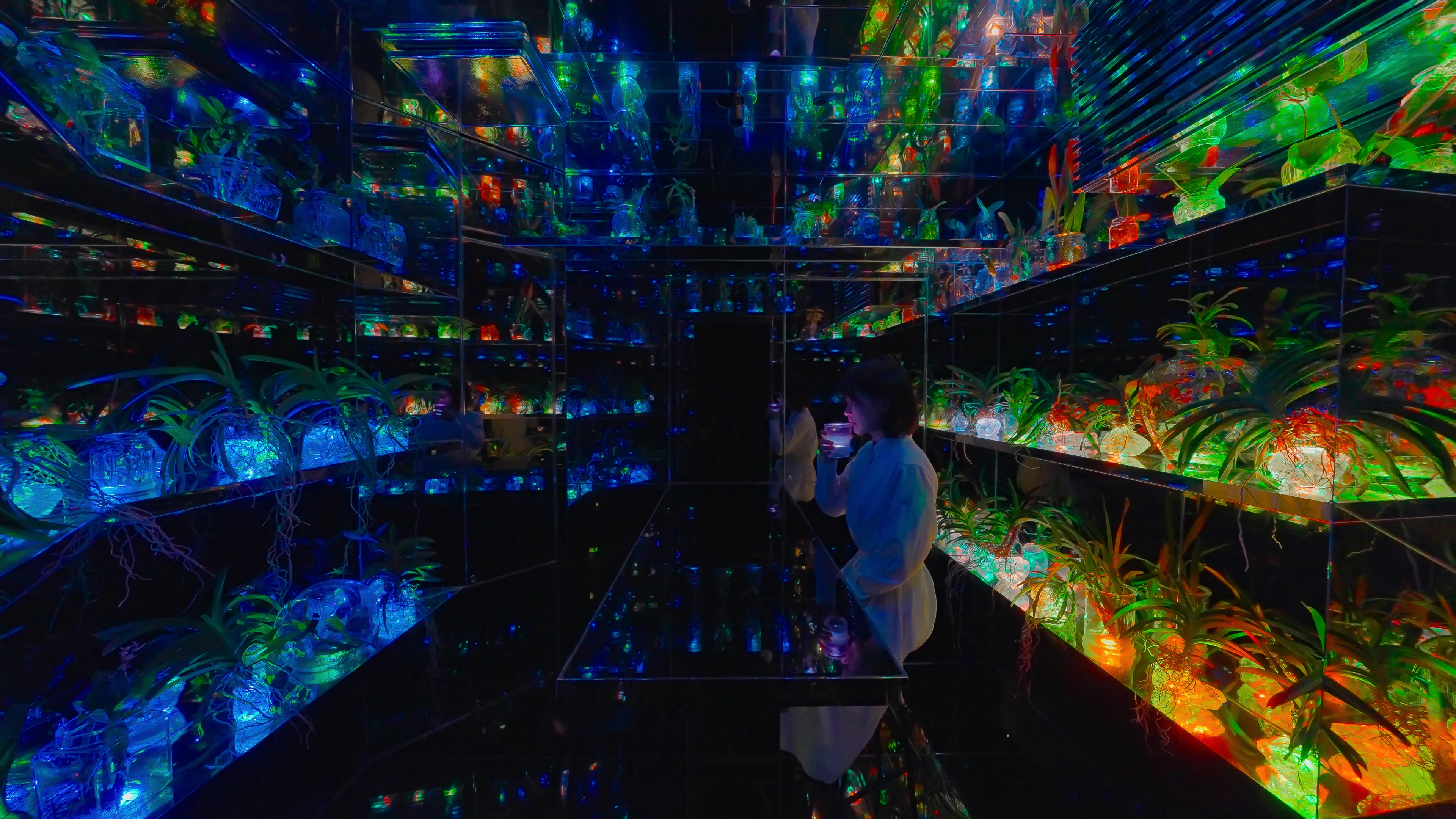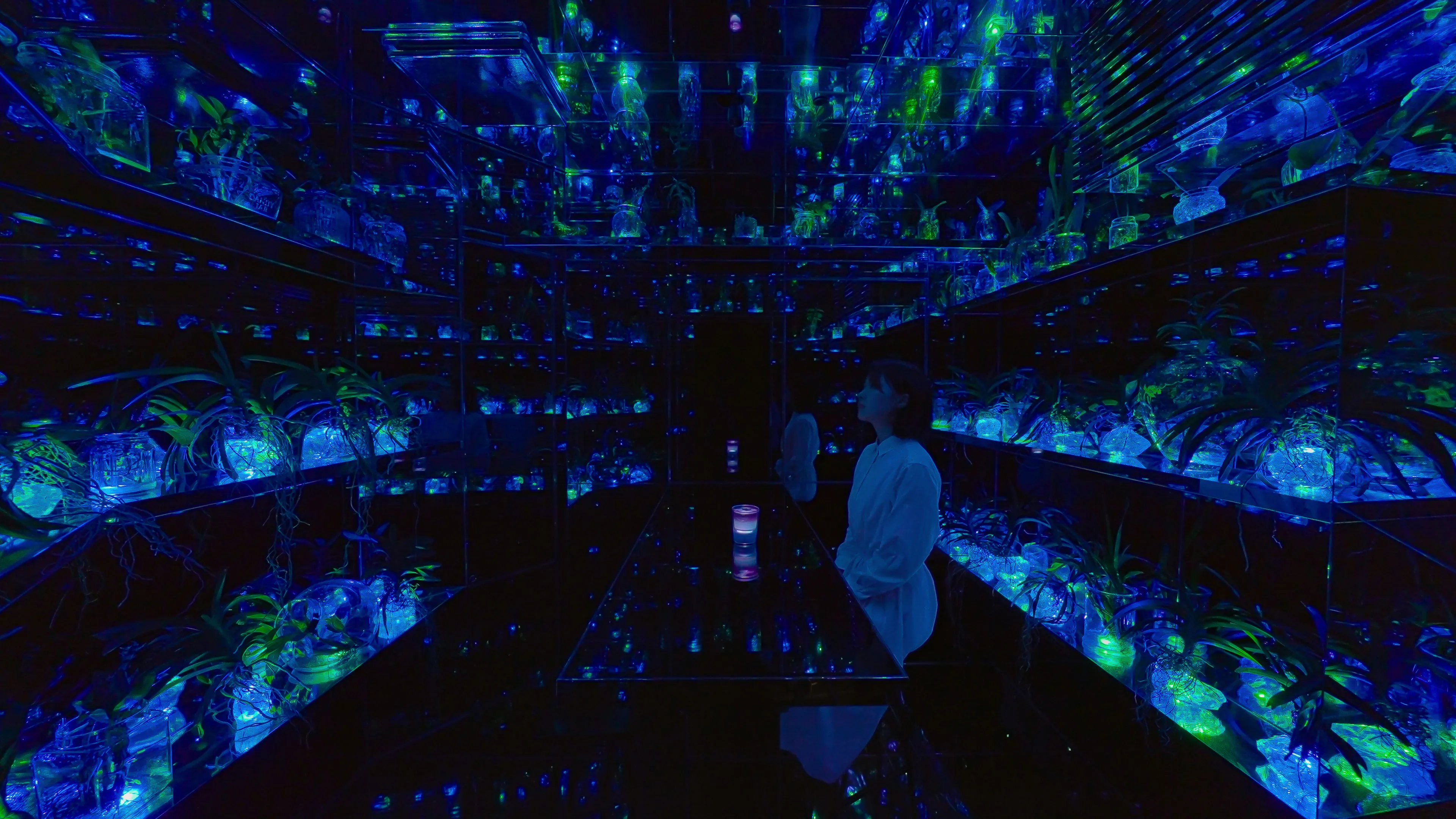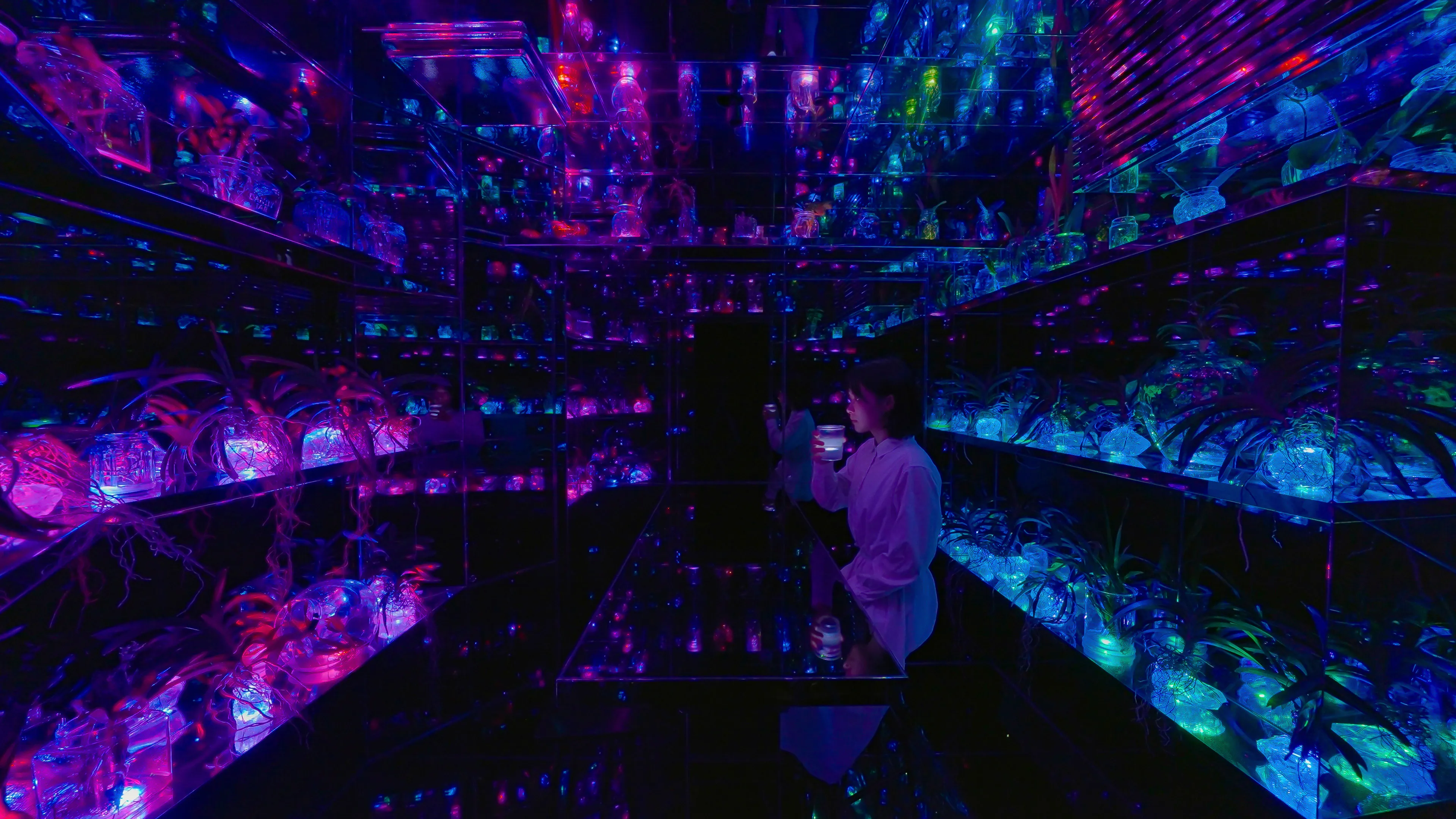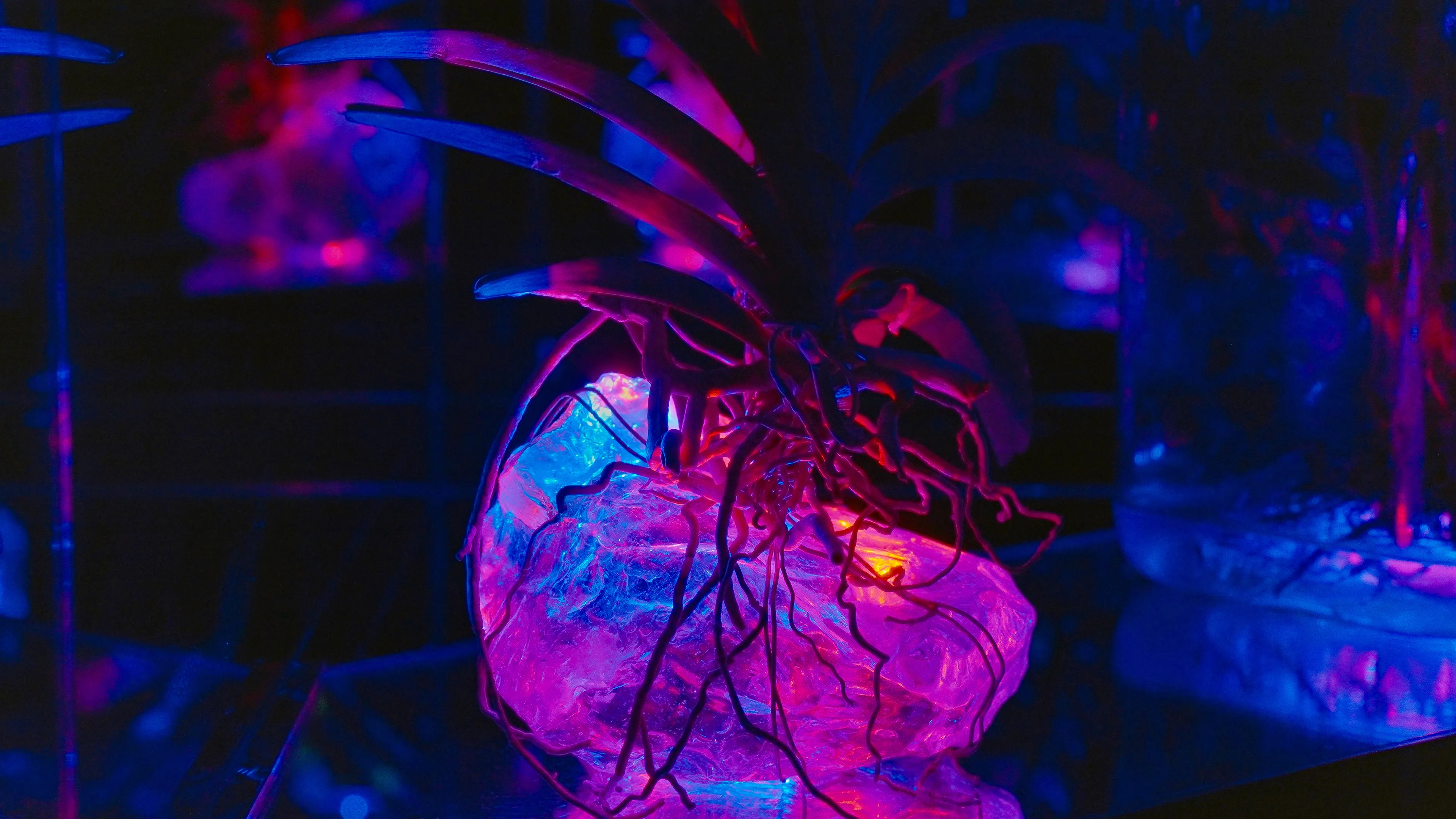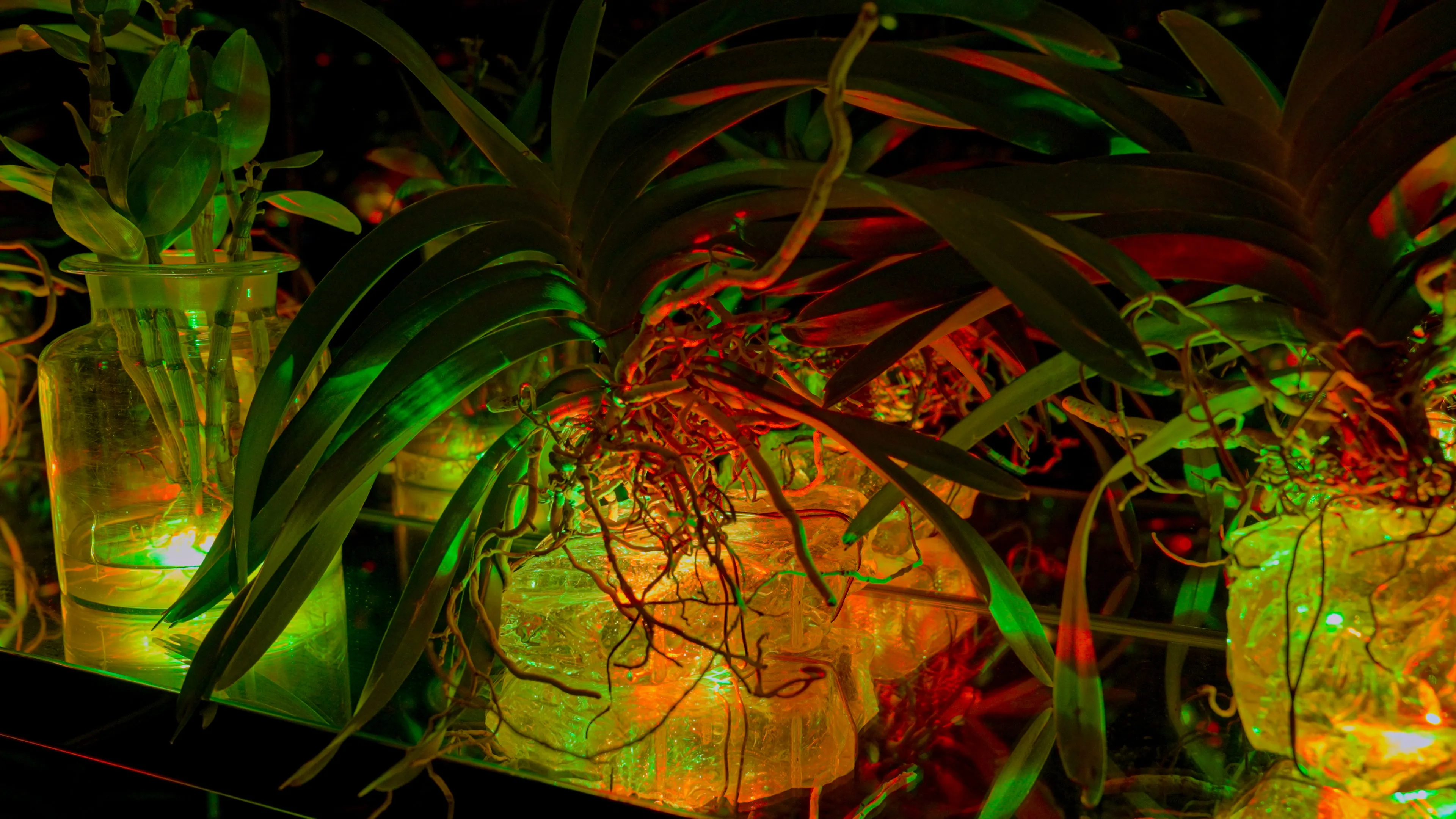Nursery Lamps in Spontaneous Order
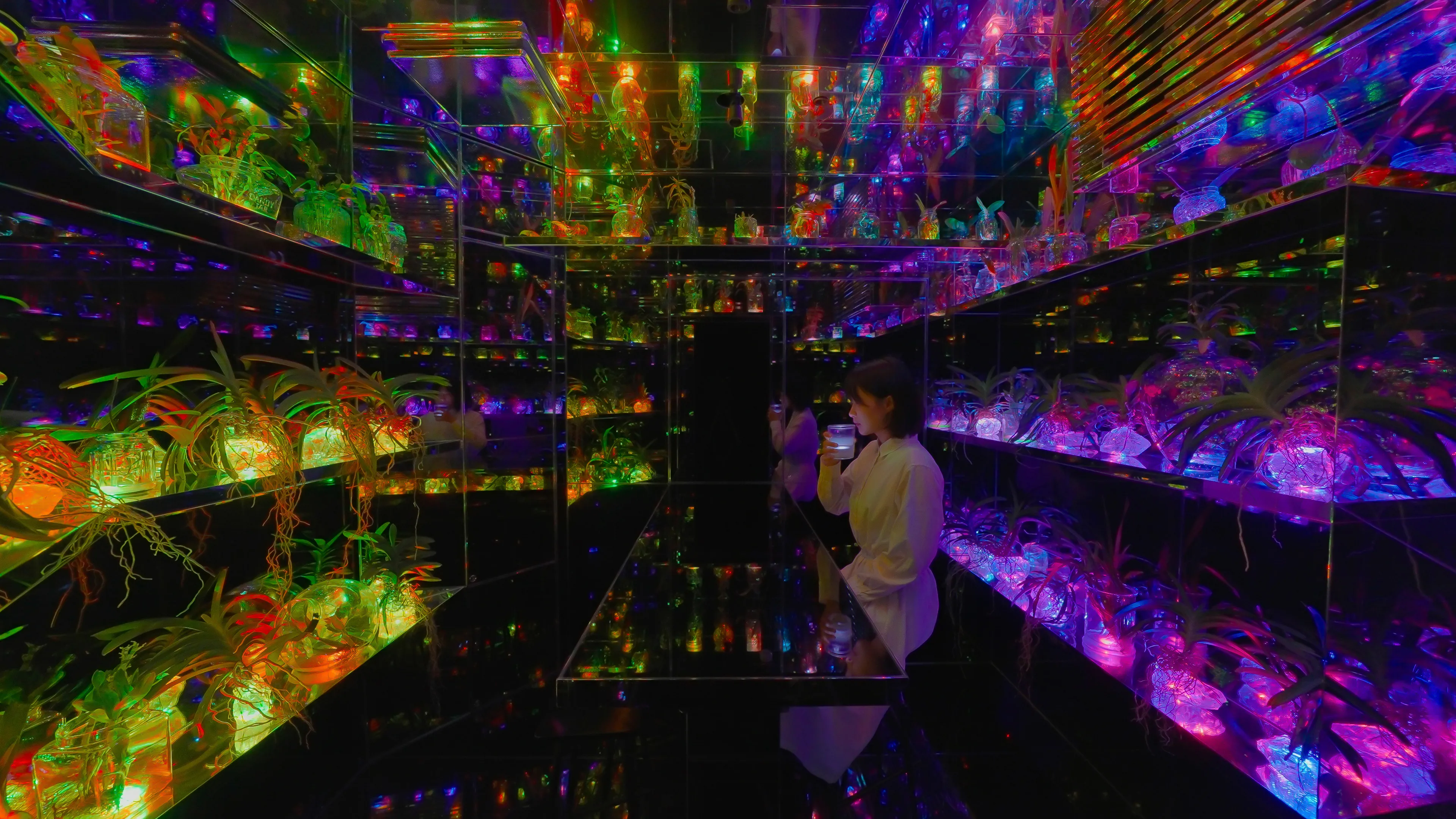
Nursery Lamps in Spontaneous Order
The orchids from Floating Flower Garden whose flowers have fallen come to this space and are nurtured in the lamps. The lamps contain light and water necessary for the growth of the orchids.
Each lamp glows to its own rhythm. Over time, nearby lamps and Tea and Sake in Spontaneous Order cause a spontaneous order phenomenon, and they influence each other.
A spontaneous order phenomenon occurs when different rhythms influence each other and synchronize. Examples include when the pendulums of two clocks gradually begin to swing together; when many fireflies gather in one tree and all start blinking at the same time, creating a larger light as a whole; or when the cells that make up the heart synchronize and tremble simultaneously to create the pulse of the heart. This can be seen in various systems, from physical phenomena, neurophysiology, to ecosystems. Although the individual parts do not have the ability to observe the whole, the phenomenon of self-organization is the creation of an ordered and larger structure, resulting from the autonomous behavior of each individual part influencing each other. This phenomenon is also known as spontaneous order.
